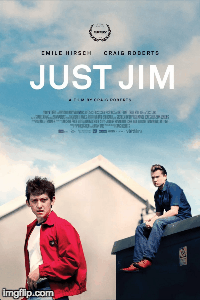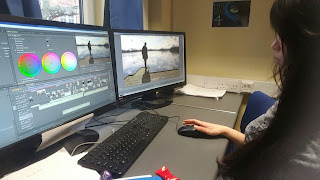this blog is now closed.
i hope that you have enjoyed reading my blog and seeing the progression from the pre-production stages to post-production.
Introduction
This is our music video
This is our music video. Please view it in 1080p for optimal experience.
My Music Video
Front digipak text
These are the front panels of our digipak album cover:
Digipak front cover image
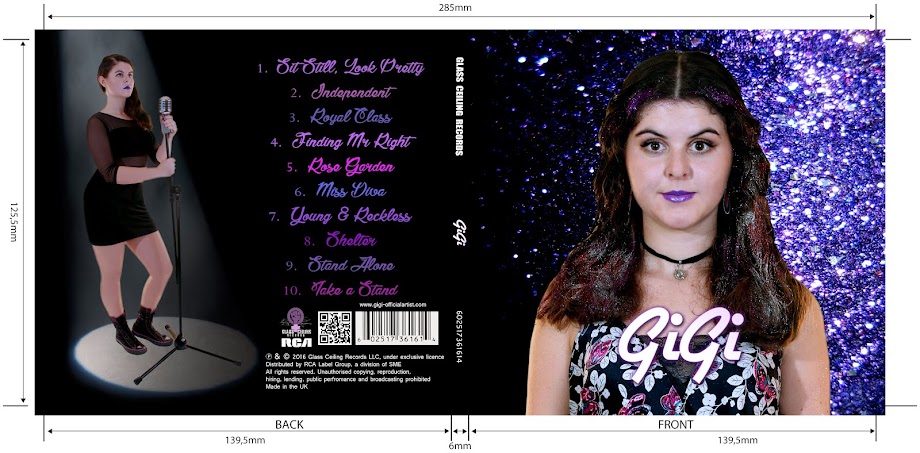
Inside digipak text
These are the inside panels of our album digipak:
Digipak inside cover image
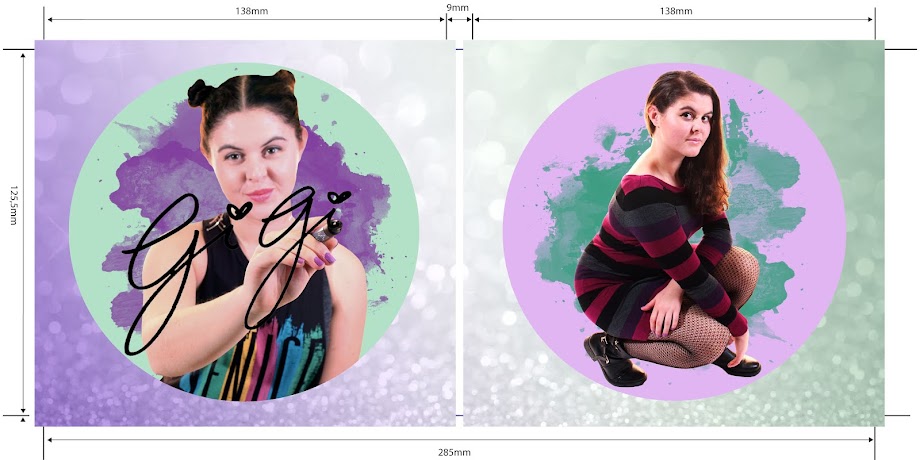
Tuesday, 29 March 2016
Tuesday, 15 March 2016
Evaluation question 1: In what was does your media product use, develop or challenge forms and conventions of real media projects?
Our film opening uses conventions of the format and narrative structure in real film openings to gratify audience expectations. We developed the style of our film based on our chosen genre, both using and challenging the conventions of British indie and the coming of age genre.
The film 'Aglet' revolves around our protagonist, a socially awkward teenager called Craig, who comes out of the closet as gay. Throughout the film, Craig struggles with society's expectations and the discrimination due to his inability to communicate well with others. He experiences unrequited love towards an openly gay teenager called David and they later go into a steady, openly gay relationship.
I have created a prezi that explores how we used, developed and challenged conventions of real media in our film opening:
The film 'Aglet' revolves around our protagonist, a socially awkward teenager called Craig, who comes out of the closet as gay. Throughout the film, Craig struggles with society's expectations and the discrimination due to his inability to communicate well with others. He experiences unrequited love towards an openly gay teenager called David and they later go into a steady, openly gay relationship.
I have created a prezi that explores how we used, developed and challenged conventions of real media in our film opening:
Labels:
AS Coursework
Evaluation question 2: How does your media product represent particular social groups?
For our film opening, we chose to represent the LGBTQ community, particularly British male teenagers. We chose to go against the stereotypes of gay men in the media by representing Craig as a normal teenager who wasn't stereotypically camp or feminine.
I made a slideshow to show our representation of British gay teenagers which you can view below. Use the arrows in the bottom right to navigate:
I made a slideshow to show our representation of British gay teenagers which you can view below. Use the arrows in the bottom right to navigate:
Labels:
AS Coursework
Evaluation question 3: What kind of media institution might distribute your media project and why?
Media Institutions
Production company
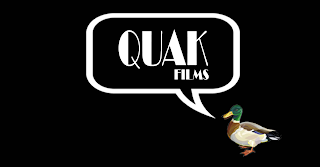 We created our own production company called QUAK films, a London based company which would produce films that focus on minority social groups in Britain. Since our film has representation of the LGBTQ community and emphasises the struggles that our gay protagonist faces, QUAK films would be likely to take up the production of our film. The company would be a common example of British indie and would
We created our own production company called QUAK films, a London based company which would produce films that focus on minority social groups in Britain. Since our film has representation of the LGBTQ community and emphasises the struggles that our gay protagonist faces, QUAK films would be likely to take up the production of our film. The company would be a common example of British indie and would therefore have a smaller budget in comparison to Hollywood films.
 |
| Criteria to be a British film |
I have created a slideshow on the production budget for Aglet which you can view below. Use the set of arrows in the bottom right hand corner to navigate.
Distribution company
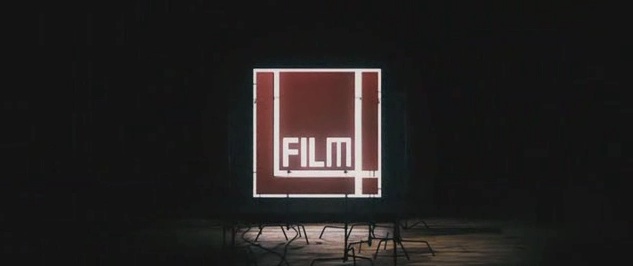
Since Film4 fund our film, they could also distribute it as they are already an established distributor of British indie films. For example, they have distributed the films Submarine and Frank. They could generate profit by selling off the rights to the film to other distribution companies. Film 4 could also broadcast the film on their TV channel.
I have included the release plan and the marketing strategy for our film which can be viewed in the slides below:
Labels:
AS Coursework
Evaluation question 4: Who would be the audience for your media product?
Our film would have a small, niche audience due to the small production scale, the age 15 certificate and the specific film genres. This is opposed to a Hollywood film with a large budget such as Star Wars: The Force awakens which would have mass audiences ranging from fans of the original trilogy to families with young children.
Our film will target the LGBTQ community because our film mainly has representation of gay teenagers. The LGBTQ community have a strong online presence so they would be likely to generate word of mouth which will promote the film.
Below I have included a brief mind map of the LGBTQ's typical lifestyle and wider media consumption habits.
Our film is a British indie, coming of age, gay, romantic drama. Therefore, our target audience would be fans of these type of genres. Although our film focuses on representation of a gay teenager, the film would appeal to more than just the LGBTQ community. For example, Blue is the Warmest Colour has a large audience of young adults who are fans of the lesbian coming of age genre but may not be a member of the LGBTQ community themselves. The critically acclaimed film has gone on to receive numerous accolades and worldwide success.
Fans of the genre will like films such as Juno, Perks of being a Wallflower, Submarine and the Inbetweeners. I have made a gif of examples which you can view below:
Our primary audience:
Our film will target the LGBTQ community because our film mainly has representation of gay teenagers. The LGBTQ community have a strong online presence so they would be likely to generate word of mouth which will promote the film.
Below I have included a brief mind map of the LGBTQ's typical lifestyle and wider media consumption habits.
Our secondary audience:
Our film is a British indie, coming of age, gay, romantic drama. Therefore, our target audience would be fans of these type of genres. Although our film focuses on representation of a gay teenager, the film would appeal to more than just the LGBTQ community. For example, Blue is the Warmest Colour has a large audience of young adults who are fans of the lesbian coming of age genre but may not be a member of the LGBTQ community themselves. The critically acclaimed film has gone on to receive numerous accolades and worldwide success.
Fans of the genre will like films such as Juno, Perks of being a Wallflower, Submarine and the Inbetweeners. I have made a gif of examples which you can view below:
Our tertiary audience:
Our film is skewed towards teenagers due to the large teenage representation in our film. This graph from the BFI show that 15-24 year golds visit the cinema more than any other age group. However, they are likely to be more frugal with their money and spend less in comparison to a family who may buy popcorn or drinks. Also, the 15-24 age group are the largest consumers of illegal online streaming or pirated films. This will damage the media industry but teenagers are likely to generate word of mouth using social media which will raise awareness of the film.
 |
| BFI statistics |
Labels:
AS Coursework
Evaluation question 5: How did you attract/address your audience?
Uses and gratifications
Audience expectations
The audience would have certain expectations when they watch a film opening. We used conventions of form, genre and narrative structure (see evaluation post 1 for more details).
Realism
We used relatable characters and relevant themes in order to add to the realism of the sequence. The character of Craig is represented as someone who struggles to understand who they are and where they stand in society. This makes him relatable to audiences and it is a typical convention in coming of age films. There has been a lot of awareness raised for the LGBTQ community in recent years and I think that our film fits into the current trends in media.
Continuity
 |
| Click on this gif to view the whole sequence on youtube |
We made sure to maintain continuity throughout the sequence using the theory that we had learnt and our experience from completing the preliminary task. The continuous flow would meet the audience's needs and expectations because it creates a seamless narrative that is easy for the audience to follow. This causes the overall sequence to appear more realistic. We used continuity theories such as match on action and the 30 degree rule while planning and shooting the kitchen scene. We took several shots of this scene from different angles and different framings so that we could match up the cuts perfectly during editing. Similarly, we took plenty of master shots of the conflict scene from different angles so that we could edit it to look seamless. We also used shot-reverse-shot during this scene to cut between different perspectives.
Audience feedback
During our production process, we got feedback from different people on what they liked and how we could improve our sequence.
Our rough cut feedback:
"Your character walks with purpose but is supposed to be in a reflective mood? It doesn't make sense for him to just stand at the lake for no reason. He needs to interact with the water or something"
In response to this, we changed his actions at the jetty from just standing at the jetty to touching the water or throwing a stone and holding his notebook. In the end, we decided that the shots of him throwing the stone and holding his notebook looked best and went well with the narrative.
 |
| Standing awkwardly at the jetty |
 |
| Throwing a stone was more realistic |
"There's such a large gap between the beginning and when the music starts. The music should start earlier on. Maybe you should have that vinyl shot as your opening shot"
We put the shot of the record player after the establishing shot of the room. The music starts just as he puts the needle on the record to create the illusion of it being diegetic sound.
"The voice over gets a bit boring and is way too long. I can't even focus on what's going on in the shots because it's distracting"The script was constantly being revised throughout our production process. Olamide rewrote the script so as to cut down the voice over and to script the conflict scene.
Feedback during the editing:
"The punch doesn't look realistic. It's not close enough to actually hit him. It should be closer than that"We had taken lots of shots from multiple angles, including a few from Craig's point of view. We chose the shot that we thought was the best. In retrospect, I would have tried to make it more comedic just like in Submarine when Oliver stands up for Jordana and ends up with a bloody nose but tries to play it off. I think that our use of the punch sfx and cut to the title was conventional of the British indie genre.
Labels:
AS Coursework
Evaluation question 6: What have you learnt about technologies from the process of constructing this product?
I had the basic skills in using the equipment and technologies in the production process. During this project, I was able to develop my skills further and learnt new techniques that improved the overall style of the opening sequence. I learnt how to use the equaliser in order to adjust the output and gain of the voice over that we had recorded. I also learnt how to use keyframes to create animations on titles.
I have evaluated the technologies that we used during our project and what I have learnt about them.
Camera Legria HFG30
An issue that we had with the camera include technical failure causing the camera to make loud buzzing sounds during our main shoot. Luckily that did not affect the quality of the diegetic sound recorded but it greatly inconvenienced us.
In hindsight, I wish that I had been able to use more create shots such as focus pulls as this would create diversity of shots in our opening sequence.
Tripod
Since we were shooting outdoors, it meant that we were shooting on uneven terrain. The tripod enabled us to shoot at a balanced level. A slight inconvenience was that it was hard to carry around our several shooting locations in Bowyers water and we had to change a few of our shots due to tight spaces where the tripod couldn't fit.
Shotgun microphone
The microphone minimises any background noise which was helpful for our outdoor shots which were very windy.
Sennheiser HD 201 headphones
We underestimated how important the background noise would be while editing our sequence. Especially during the conflict scene, only Olamide and I were operating the camera which meant that we had to multi-task and sometimes neglected the finer details of the noise.
I would advise anyone doing this project to pay a lot of attention to listening through the headphones.
Camera GoPro Hero 3+ silver edition
The GoPro lens is a fish-eye lens and so it captures a lot more than we expected. This became apparent after we reviewed the footage from our test shoot.
A disadvantage of the GoPro is that we couldn't view the footage immediately as it can only be viewed when it is connected to a PC or a tablet device.
In the end, the shot that most people commented on was the GoPro shot of the vinyl record because it was creative and unconventional.
PC edit suite
- Adobe Premiere Pro
Macbook
- Livetype
Personally, I was accustomed to using apple products and was able to teach others how to use livetype.
Advantages of using Livetype would be that it had a lot of different animations and tools just for titles.
The flipside would be that there was perhaps too many different tools that it wasn't clear which one would be the most effective to use.
Another disadvantage would be that we had to save the titles onto a USB stick and then transfer that to our edit suite. If we weren't satisfied with the look, we'd have to repeat the process, which was difficult to do when we weren't editing the title directly onto our project. This was time consuming and eventually, we created our titles on Premiere Pro, which in my opinion worked better for our project because we were able to animate it based on the action that was happening in the shots and use keyframes that were specific to the movements that we wanted rather than generic animations.
Overall, I think that our group worked well in terms of using the available technology to the best of our ability. I personally worked in the areas that I specialised in and was able to learn about new techniques that was useful in our final sequence.
I have evaluated the technologies that we used during our project and what I have learnt about them.
Technologies
Camera Legria HFG30
 |
| Our shooting equipment |
In hindsight, I wish that I had been able to use more create shots such as focus pulls as this would create diversity of shots in our opening sequence.
Tripod
Since we were shooting outdoors, it meant that we were shooting on uneven terrain. The tripod enabled us to shoot at a balanced level. A slight inconvenience was that it was hard to carry around our several shooting locations in Bowyers water and we had to change a few of our shots due to tight spaces where the tripod couldn't fit.
Shotgun microphone
The microphone minimises any background noise which was helpful for our outdoor shots which were very windy.
Sennheiser HD 201 headphones
We underestimated how important the background noise would be while editing our sequence. Especially during the conflict scene, only Olamide and I were operating the camera which meant that we had to multi-task and sometimes neglected the finer details of the noise.
I would advise anyone doing this project to pay a lot of attention to listening through the headphones.
Camera GoPro Hero 3+ silver edition
 |
| Alex was in the shot during the test shoot |
A disadvantage of the GoPro is that we couldn't view the footage immediately as it can only be viewed when it is connected to a PC or a tablet device.
In the end, the shot that most people commented on was the GoPro shot of the vinyl record because it was creative and unconventional.
PC edit suite
- Adobe Premiere Pro
I learnt how to use the audio effect EQ to change the output gain, how to use keyframes and how to grade shots. You can view the youtube videos that I made on how I edited the audio and how I graded shots below:
 |
| Grading using the three way hue and angle |
Advantages of using Premiere Pro is that we had all used it before to edit during the preliminary task. It is pretty simple to use.
A disadvantage would be that renaming and ordering the shots can be repetitive and time consuming. Not much in terms of actual editing can be done until all the shots have been ordered and sorted through.
My best advice to anyone using Premiere Pro to edit would be to familiarise yourself with the software as best as you can during the test edit so that you can fully utilise your foundation skills and learn new ones to use during the main and back-up edit sessions.
Macbook
- Livetype
 |
| Our macbook and Livetype software |
Advantages of using Livetype would be that it had a lot of different animations and tools just for titles.
The flipside would be that there was perhaps too many different tools that it wasn't clear which one would be the most effective to use.
Another disadvantage would be that we had to save the titles onto a USB stick and then transfer that to our edit suite. If we weren't satisfied with the look, we'd have to repeat the process, which was difficult to do when we weren't editing the title directly onto our project. This was time consuming and eventually, we created our titles on Premiere Pro, which in my opinion worked better for our project because we were able to animate it based on the action that was happening in the shots and use keyframes that were specific to the movements that we wanted rather than generic animations.
Overall, I think that our group worked well in terms of using the available technology to the best of our ability. I personally worked in the areas that I specialised in and was able to learn about new techniques that was useful in our final sequence.
Labels:
AS Coursework
Evaluation question 7: Looking back at your preliminary task, what do you feel you have learnt in the progression from it to the full project?
I learnt a lot in the pre-production, production and post-production stages of filming from completing the preliminary task, which helped in when I did the final product of our film opening sequence.
The Preliminary Task Brief
Continuity task involving filming and editing a character opening a door, crossing a room and sitting down in a chair opposite another character, with whom she/he then exchanges a couple of lines of dialogue. This task should demonstrate match on action, shot/reverse shot and the 180 degree rule.
The Production Task Brief
To produce a 2 minute opening sequence for a fiction film. All video and audio material must be original, produced by the candidate(s), with the exception of music and audio effects from a copyright-free source. It should be clear from your sequence who he target audience is.
I have made a prezi about how I feel the preliminary task has affected our production task and the progressions from i to the full project:
In conclusion, I think that the preliminary task help our group to create a continuous sequence. I was able to use skills that I had learnt about pre-production and post-production. I really enjoyed working with my friends on both tasks and as a group we were able to learn new skills from each other. I think that the
The Preliminary Task Brief
Continuity task involving filming and editing a character opening a door, crossing a room and sitting down in a chair opposite another character, with whom she/he then exchanges a couple of lines of dialogue. This task should demonstrate match on action, shot/reverse shot and the 180 degree rule.
To produce a 2 minute opening sequence for a fiction film. All video and audio material must be original, produced by the candidate(s), with the exception of music and audio effects from a copyright-free source. It should be clear from your sequence who he target audience is.
I have made a prezi about how I feel the preliminary task has affected our production task and the progressions from i to the full project:
In conclusion, I think that the preliminary task help our group to create a continuous sequence. I was able to use skills that I had learnt about pre-production and post-production. I really enjoyed working with my friends on both tasks and as a group we were able to learn new skills from each other. I think that the
Labels:
AS Coursework
Saturday, 5 March 2016
Construction post 10: Looking back - reflections on our final outcome
You can watch our final sequence below:
I think that our sequences fits the brief. Excluding the idents and the institution titles, our film opening sequence is 2 minutes 9 seconds long. I personally believe that the target audience for our film is evident through our characterisation or Craig. Our film opening follows the conventions of a typical film opening of the British indie genre.
Looking back:
- I am delighted with our final sequence, especially with the aesthetics of the footage from the lake and the go-pro videos.
- I enjoyed working with my group to come up with ideas for the narrative and creative shots
- Filming and directing at the shoot sessions was fun
- I was comfortable with editing our sequence but I wish I had more time to experiment with more techniques
- If I had more time, I would fix the grading discrepancies so that they are all the same
- I would have added more animations to the titles
When we showed out target audience the final clip, many were impressed by what we had created. They found the storyline intriguing and the narrative easy to follow.
In terms of the LGBTQ community, a few did not immediately understand that the main character was a closeted gay person but others did catch onto the use script that we had specifically written for the voice over and noticed the significance of it. However, I do not think that this plays a major role in our film opening as, like other films, the narrative will explore his sexuality and his relationship with David in more detail during the middle of the film.
Labels:
AS Coursework
Construction post 9: My technical learning curves
The project allowed me to learn new skills and improve my overall technical ability.
Alex has a lot of experience in editing go-pro videos. During our edit sessions together, he could point out my mistakes and offer guidance. If there was anything that the group did not know how to do, we would ask our technician for help. With Alex's help, I learnt about how to use keyframes. We animated a title to appear when Reuben walked through the frame.
I particularly enjoyed learning about sound mix and using the 'equaliser' to change the output and gain. The master EQ allowed me to make Reuben's voice clearer and I attempted to lower the pitch of Alex's voice. You can watch a video of me using EQ below:
I learnt about how to use the three way colour corrector to grade our shots. This was essential to many of our shots at the lake as we wanted to maximise the aesthetic appearance by adding visual effects to enhance the shots that we had worked so hard to take. You can watch a video of me using the three way colour hue and balance below:
I thoroughly enjoyed the process of overcoming my technical difficulties. I found that over time, I learnt skills better with more experience.
Alex has a lot of experience in editing go-pro videos. During our edit sessions together, he could point out my mistakes and offer guidance. If there was anything that the group did not know how to do, we would ask our technician for help. With Alex's help, I learnt about how to use keyframes. We animated a title to appear when Reuben walked through the frame.
I particularly enjoyed learning about sound mix and using the 'equaliser' to change the output and gain. The master EQ allowed me to make Reuben's voice clearer and I attempted to lower the pitch of Alex's voice. You can watch a video of me using EQ below:
I learnt about how to use the three way colour corrector to grade our shots. This was essential to many of our shots at the lake as we wanted to maximise the aesthetic appearance by adding visual effects to enhance the shots that we had worked so hard to take. You can watch a video of me using the three way colour hue and balance below:
I thoroughly enjoyed the process of overcoming my technical difficulties. I found that over time, I learnt skills better with more experience.
Labels:
AS Coursework
Construction post 8: My personal contribution to the edit sessions
During the edit sessions, I personally spent a lot of my free time in the edit suite to edit our sequence.
I recorded a few voiceovers with our main actor, Reuben, using a Blue Yeti Microphone and the software Audacity. After it was pointed out that the voiceover sounded muffled, I edited the audio to increase the output gain using 'equaliser' which made his voice clearer.
I used Livetype on the macbook to experiment with different title fonts and motions. I also taught Georgina how to use it as she had not used it before. However the titles that I made did not suit the visual footage and we decided it would be easier to make the titles on Adobe Premiere Pro because it was more convenient to place the titles and add motion to them. Originally, I had hoped to create titles that were similar to CAMP festival 2015 which had animated moths flying about the titles. After trying to create titles, I realised that with our limited time, skills and budget it was unrealistic that we could create titles with graphics like that.
 |
| I made a gif of the kind of title that I had in mind |
I added transitions to our titles and a few shots in order to create a seamless flow instead of jumpy cuts. I used the film dissolve to create an illusion of time passing in the jetty scene.
During the edit sessions, we tested different grading techniques and experimented with saturation, brightness and contrast. A particular shot that I worked on was the shot of Craig sitting down to eat cereal. The lighting in the two shots meant that one shot was very saturated and looked very yellow in comparison to the other. I spent a lot of time using 'ProcAmp' and 'Three Way Color Corrector' to try to match the table cloth and bowl in both shots. In the end I got the two shots to match as best as I could by adding a blue hue to one and a yellow/orange to the other. As you can see below, the two are not perfectly matching and Reuben's jumper appears more purple in the first shot.
The editing process was very time consuming and required a sharp eye to spot small problems in grading. I think that I did the best that I could in the time that we were given.
Labels:
AS Coursework
Construction post 7: My personal contribution to the shoot sessions
In the shoot sessions, I took on various jobs. In the test shoot, I acted as one of the bullies (but my acting was appalling), I also took on the role of director, camerawoman, the person on sound and the clapper-board.
In the photos below, you can see the shots that I contributed to:
In the photos below, you can see the shots that I contributed to:
 |
| I am holding the clapper-board, which documents the shot number and the take so that it could be organised during the edit easily |
 |
| Here, I am the the midst of bullying Ales - a hard thing to do when he is about twice as tall as I am! |
 |
| Here, I am filming an over the shoulder shot (OTS) of Reuben holding his diary |
 |
| This is the shot that I filmed |
 |
| This is me during the back-up shoot capturing footage of the lake |
 |
| This is what the camera recorded |
 |
| I also wanted to get this shot so that that we could cut in between two master shots, which would display good continuity |
The lake scenes that we shot at the jetty were an important part of our sequence due to its aesthetics and emphasised Craig's character - solitude and completive. I decided that our protagonist needed a purpose and a reason to be there. At the back-up shoot, I came up with the idea that he would throw a stick into the water as opposed to trailing his hand through the water which looked quite awkward and took away from the relativity of the scene.
I think that the efficiency of my filming improved a lot over the course of time. I already knew the skills and was able to implement them but had to familiarise myself with the equipment. I found that in the last shooting day, I was able to save time by moving quickly in between shots. I could adjust the height of the tripod and check the bubble level in record speed.
Overall, I think that our group worked well in the shoot sessions. Everybody contributed well to the shooting.
Labels:
AS Coursework
Construction post 6: Reflections on edit week 2
During the second edit week, we focused mainly on:
- Adding the shots from our back-up shoot and putting them into the chronological order on our timeline
- Finishing the titles and adding them onto our shots
- Grading our shots
- Editing the voice over and diegetic sound using 'audio equalizer'
- Putting transitions onto shots and titles
- Cutting down the timing by reducing the frames
 |
| Our editing schedule for week 2 |
 |
| Our post-it-note system |
Whilst editing our sequence, we noticed that the lighting was not thorough throughout the conflict scene. I suspect that, because we filmed many master shots of the conflict scene, over time the sun must have gone behind the clouds causing the shot to be dark and undersaturated. We graded the shots so that they looked as similar as possible using the three way colour corrector.
We tried to prioritise the visual of the trees because the trees took up the majority of the mise-en-scene. However this meant that, although the trees matched in terms of colour, Alex Brock's hair didn't. You can see that in the bottom photo, Alex's hair and Georgina's coat has a blue-green tint to it. |
| The three way hue balance and angle |
 |
| Georgina's jacket is white |
 |
| Alex Brock's hair is blond |
 |
| Both Georgina's coat and Alex's hair have a blue-green tint |
 |
| The sepia effect that we were inspired by originally |
We eventually compromised by increasing the saturation by only 20% and adding subtle sepia and brightening effects.
However, I noticed that some of our shots are still inconsistent despite our best efforts:
 |
| The clouds have a pink tint |
 |
| The clouds have a yellow tint |
Despite this, our target audience did not pick up on the grading like I thought they would. This was probably due to the fact that I was so exposed to our work and in retrospect, the grading is only noticeable if somebody purposefully looks out for it. Our TA has positive feedback after watching the clip and commented that the events flowed better than it did in our rough cut which was probably due to the team using the previous feedback and more continuity techniques to make the scenes continuous.
Labels:
AS Coursework
Construction post 5: The back-up shoot
For the back-up shoot, we reshot all of the scene at Bowyer's Water. Even though we only planned to redo the conflict scene with the bullies, it was important that we maintained continuity in our sequence so the lighting and weather had to be the same. I think that the weather during our back-up shoot was perfect and we captured beautiful shots of the sky and even had some swans in the background of our shots! I personally thought that the weather for the main shoot was not ideal as it was extremely cold and the shots were a bit dark due to the lack of sun.
We watched some bullying scenes in films previous to our back-up shoot which reinforced our suspicions that we needed more master shots from different angles. Since Alex and Georgina were acting as bullies in our sequence, Olamide and I alternated between shooting and directing the conflict scenes. In the end, we ended up with a sufficient number of master shots which meant that while editing, we could choose the best shot from a large range of shots from different angles.
Because we only had to shoot the outdoor scenes, we could spend a lot of time running through the sequence many times, meaning that we could focus on getting good shots without worrying about the time it would take. This resulted in a sequence that had good continuity. I think that the morale of the group was good and I had fun during the back-up shoot with the certainty that our shots were much improved from the test and main shoot.
We watched some bullying scenes in films previous to our back-up shoot which reinforced our suspicions that we needed more master shots from different angles. Since Alex and Georgina were acting as bullies in our sequence, Olamide and I alternated between shooting and directing the conflict scenes. In the end, we ended up with a sufficient number of master shots which meant that while editing, we could choose the best shot from a large range of shots from different angles.
 |
| Trying to get that perfect shot |
 |
| Multi-tasking |
 |
| Setting up the camera and finding the right framing |
Labels:
AS Coursework
Construction post 4: Reflections on edit week 1
During the first edit week, we focused mainly on:
- Renaming our shots
- Identifying which takes to use
- Cutting down the shots
- Adding the music that Alex had recorded
- Recording the voice over with Reuben
We were aware that we would reshoot the shots from Bowyer's water so we focused mainly on the shots from Alex's house to save time in our next edit week.
 |
| The title that we were in the process of making |
 |
| A title from the film 'Submarine' |
 |
| Our finished title |

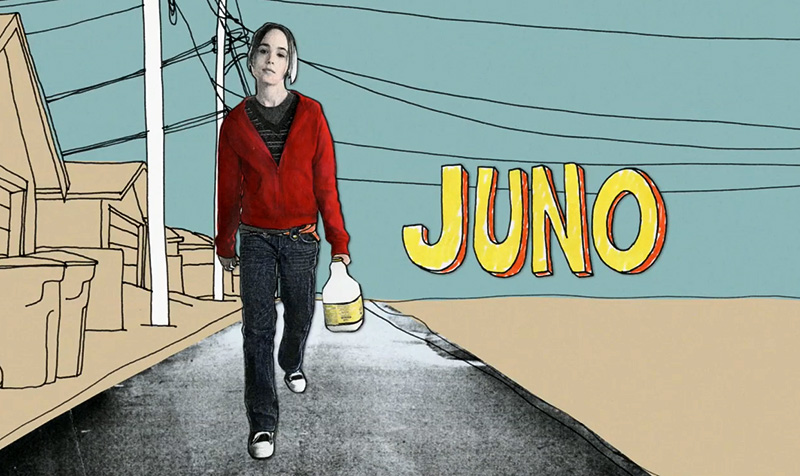 Our team decided on the font 'A song for Jennifer' because we felt that it was a perfect font for the British indie genre and was similar to that used in 'Submarine' and 'Juno'. Our teacher loved the font that we chose and suggested that, to make it even more British indie, we removed the capital letters to make it seem more quirky and adds character to our opening title, which is typical of British indie. When we showed the title to out TA, they were also keen on the non-capitalised titles over our original one so we made the changes accordingly.
Our team decided on the font 'A song for Jennifer' because we felt that it was a perfect font for the British indie genre and was similar to that used in 'Submarine' and 'Juno'. Our teacher loved the font that we chose and suggested that, to make it even more British indie, we removed the capital letters to make it seem more quirky and adds character to our opening title, which is typical of British indie. When we showed the title to out TA, they were also keen on the non-capitalised titles over our original one so we made the changes accordingly.
We filled in an editing schedule for when we would edit. This meant that we were able to stay organised for the whole week.
 |
| Our edit schedule for week 1 |
In week 2, we plan to:
- Add the shots from our back-up shoot
- Add titles
- Add the voiceover
- Grade our shots
- Add transitions such as dissolves to create continuous flow between shots
- Cut down each shot by even a frame because our current sequence runs over the 2 minutes that was specified in the brief
I expect that we have a lot of work to do in the upcoming week but I enjoy the editing part of the process very much as I tend to focus a lot on the small details of our sequence.
Labels:
AS Coursework
Construction post 3: Reflections on our main shoot session
I think that our main shoot went quite smoothly. We had already revised our sequence of events and took out shots that did not work well in the test shoot and added new shots to improve the continuity of our opening sequence. This made it a lot easier to film during our main shoot. However, we had a technical issue with the equipment - a loud sound came out from the headphones whenever we recorded our shots despite the sound being recorded properly. Although we thought that it wasn't a big issue, this eventually led to us not noticing background noise from the train that was going by during a few of our shots.
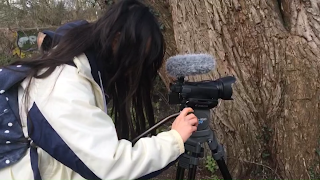
After our main shoot, we identified that the conflict scene between the character Craig and the bullies had to be improved. This was due to a combination of bad acting and the master shot that we took. We decided that in our back-up shoot we would record plenty of master shots from different angles so that we had a range of options to choose from when we edited our sequence.
When we showed members of our target audience (TA), they reacted positively to the shots in the house, commenting about the composition of the shots and the nice use of the GoPro when shooting shots such as the cereal bowl and the vinyl record shot. I think that the target audience enjoyed those shots due to the immersiveness of it and the inspiration from British indie films was evident in the response from our TA; consumers of British indie films, TV and music. However, many of them pointed out similar points that my group and made at the scene where the character Craig confronts the bullies as they said that it seemed out of character, which could be due to poor acting or not enough takes of the scene.
This is a video that I took of the noise that the camera was making and our attempt as a group to resolve the issue:

After our main shoot, we identified that the conflict scene between the character Craig and the bullies had to be improved. This was due to a combination of bad acting and the master shot that we took. We decided that in our back-up shoot we would record plenty of master shots from different angles so that we had a range of options to choose from when we edited our sequence.
When we showed members of our target audience (TA), they reacted positively to the shots in the house, commenting about the composition of the shots and the nice use of the GoPro when shooting shots such as the cereal bowl and the vinyl record shot. I think that the target audience enjoyed those shots due to the immersiveness of it and the inspiration from British indie films was evident in the response from our TA; consumers of British indie films, TV and music. However, many of them pointed out similar points that my group and made at the scene where the character Craig confronts the bullies as they said that it seemed out of character, which could be due to poor acting or not enough takes of the scene.
I also think that Alex's appearance did not make him appear like a chav. Because Alex was not confident in acting, we gave a few lines in comparison to Georgina but it seemed out of place that he would stay silent and then randomly punch our protagonist. In light of this, I made changes to the costume list so that Alex would look more 'thuggish' and Olamide made changes to the script so that he had more lines to say.
On the other hand, the footage from Alex's house was good and we were happy with the range of shots that we took as well as the spontaneous ideas that we got during the shoot. We chose to only reshoot the shots from Bowyer's Water.
Labels:
AS Coursework
Construction post 2: Our post-production kit
Our post-production kit includes:
Hardware: PC edit suites
- Adobe Premiere Pro CS 5.5 for editing our sequence
- Adobe Photoshop for creating our titles
- Audacity for recording our voiceover
- Blue Yeti Microphone for recording our voice over
 |
| Our dual monitor screen and Premiere Pro timeline |
 |
| Our edit suite and post it note system |
Hardware: Macbook laptop
- LiveType for creating titles
 |
| Livetype on the macbook |
Most of our group were familiar with using the post-production kit so we were able to edit our shots well. We mainly used Adobe Premiere Pro to rename shots, cut them down and drag them onto the timeline where we could sort them into the chronological order of our sequence.
Labels:
AS Coursework
Construction post 1: Our production kit
Our production kit includes:
- Canon Legria HF G30
- Clapper board
- Sennheiser HD 201 headphones
- Shoot board
- Shotgun microphone
- Tripod
Labels:
AS Coursework
Subscribe to:
Posts (Atom)


